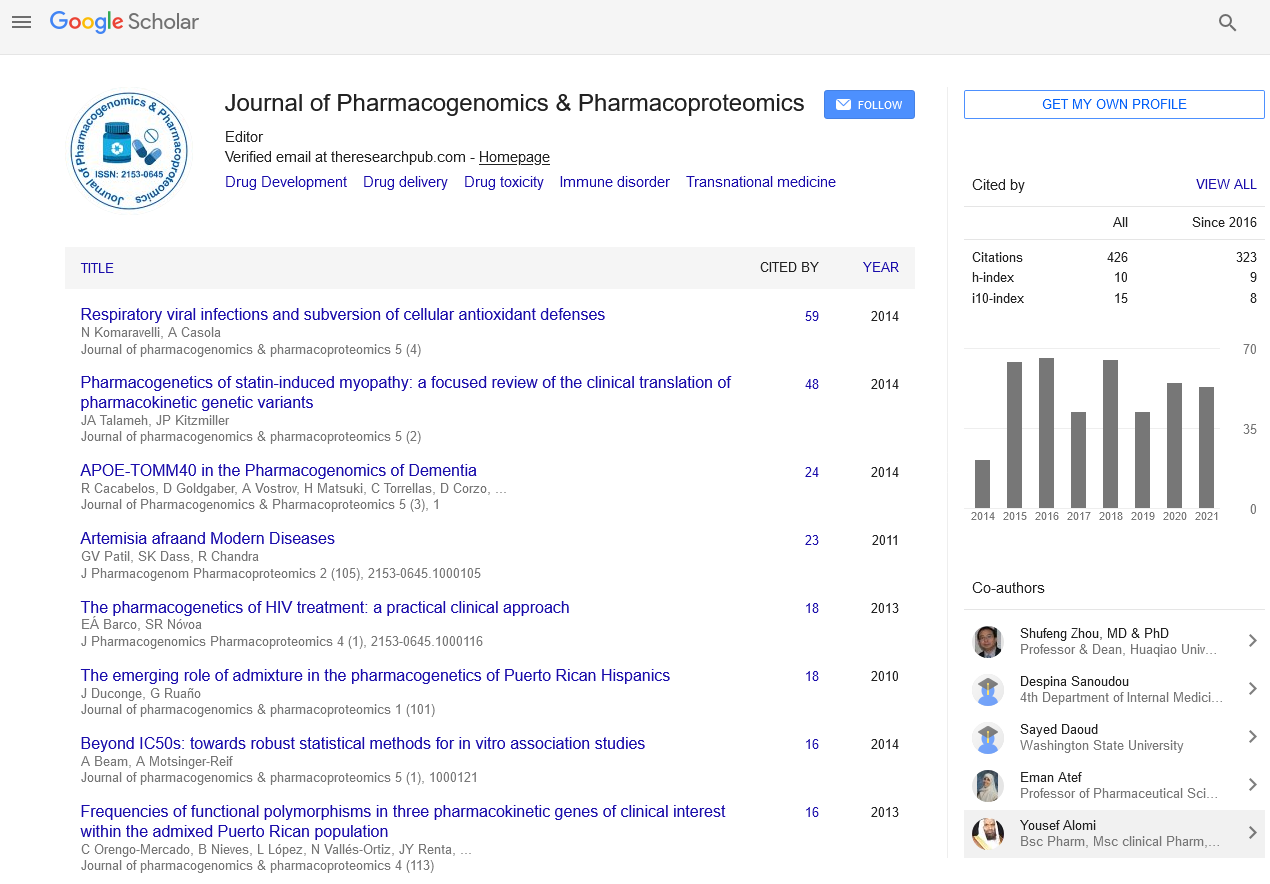Indexed In
- Open J Gate
- Genamics JournalSeek
- Academic Keys
- JournalTOCs
- ResearchBible
- Electronic Journals Library
- RefSeek
- Hamdard University
- EBSCO A-Z
- OCLC- WorldCat
- Proquest Summons
- SWB online catalog
- Virtual Library of Biology (vifabio)
- Publons
- MIAR
- Euro Pub
- Google Scholar
Useful Links
Share This Page
Journal Flyer

Open Access Journals
- Agri and Aquaculture
- Biochemistry
- Bioinformatics & Systems Biology
- Business & Management
- Chemistry
- Clinical Sciences
- Engineering
- Food & Nutrition
- General Science
- Genetics & Molecular Biology
- Immunology & Microbiology
- Medical Sciences
- Neuroscience & Psychology
- Nursing & Health Care
- Pharmaceutical Sciences
High second harmonic generation signal from muscles and fascia pig?s muscles using the twophoton laser scanning microscope
2nd International Conference on Predictive, Preventive and Personalized Medicine & Molecular Diagnostics
November 03-05, 2014 Embassy Suites Las Vegas, USA
A H Reshak
Accepted Abstracts: J Pharmacogenomics Pharmacoproteomics
Abstract:
The author has provided update to two photon laser scanning microscope by adding new technique which enables to simultaneously measure the second harmonic generation signals in the forward and backward directions, in the meantime one can measure the two photon excitations fluorescence (TPEF) if the materials produce fluorescence. In the present work, the fascia muscles, muscles of pig, and pig?s skin were used. It was found that these materials produced high second harmonic generation (SHG) signal in both directions. These measurements show that the SHG strongly depends on the state of the polarization of the laser light and the orientation of the dipole moment in the molecules that interact with the laser light. It is therefore advantageous to control the laser?s state of polarization, to maximize SHG. The main aim of this work is to establish multi-functional technique by combining three platforms of laser scanning microscopy; the fluorescence microscopy, harmonic generation microscopy and polarizing microscopy which offers several advantages to uncover the true structures of the sample and enables us to simultaneously measure the second harmonic generation signals in the forward and backward directions in order to see the true architecture of the specimen which can not produce auto-fluorescence, in the meantime one can measure the TPEF if the specimen produces fluorescence. The second aim of this work is the reconstruction of complementary images by eliminated the angle dependence of images when using linear polarized laser and show the true SHG images of the samples to uncover their structures. This will provide the biologists and medical researchers another useful visualization tool to explore the nature of living samples. The third aim is to provide the optical non-invasive nature desirable for microscopy applications by utilizing the fact that the SHG is known to leave no energy deposition to the interacted matters due to their virtual energy conservation characteristic.
Biography :
A H Reshak is a Full Professor and Senior Scientist Holding a Honorary Doctorate of Engineering for my achievements in Sciences and Technology. Currently he is Professor at West Bohemia University in Plzen-Czech Republic. He is the Head of Department ?Laser, Microscopy Condensed Phase in Biology & Material Engineering ?New Technologies-Research Center. He is also Professor for Special assignments at University of Malaysia PerlMalaysia, School of Materials Engineering & Center of Excellence Geopolymer System Research, Representative of University Malaysia Perlis in Europe. He is also Professor at Czech Technical University, Faculty of mechanical Engineering -Prague- Czech Republic and Visiting Professor at Department of Physics and Astronomy, King Saud University, Saudi Arabia.


